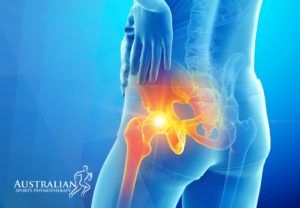Most snapping hip cases are painless and do not necessitate immediate treatment. However, the snapping sensation can be unpleasant and painful over time.
Many cases of snapping hip syndrome are not dangerous, but they do increase the incidence of joint damage. This condition, however, can cause significant pain and impair performance in athletes and dancers.
What is snapping hip syndrome?
Snapping hip syndrome is a hip disorder also known as coxa saltans. Due to its prevalence among dancers, snapping hip is also known as the dancer’s hip.
The 3 main types of snapping hip syndrome
Internal snapping hip
The most common type of snapping hip is the internal snapping hip. It happens when your tendons slide over bone structures in the front of your hip joint. Pain is frequently felt near the groin.
External snapping hip
Your tendon or muscle slides over the top of your thigh bone or femur with an external snapping hip. The pain gradually worsens. It may begin as discomfort and progressively worsen.
When the hip snaps during regular movements such as walking, running or riding a bicycle, patients frequently report that it feels like it will pop out of its socket.
External snapping hip syndrome is frequently associated with painful tenderness on the outside of the hip, caused by trochanteric bursitis, a type of hip bursitis.
A tight IT band is also linked to external snapping hip syndrome.
Intra-articular snapping hip
The least common type of snapping hip syndrome is intra-articular snapping hip, which is caused by a problem with the hip joint rather than a tendon or muscle.
Internal snapping hip is quite painless. However, if pain is present, this may be an indication of an internal hip pathology such as a tear in the hip labrum and is otherwise managed differently.
A cartilage injury can cause hip snapping caused by a fall or direct trauma to the hip. People who suffer from this type of injury may feel as if their hip “locks up” and have a limited range of motion.

Common causes of snapping hip syndrome
Snapping hip syndrome occurs when hip muscles are overused and become tight, fatigued and swollen. Snapping hip syndrome is typically caused by a combination of overactivity and tightness of specific muscles combined with underactivity and weakness of other muscles.
Symptoms of snapping hip syndrome
- Difficulty performing daily tasks such as getting out of a chair and walking.
- When lifting, lowering, rotating, or swinging the leg, there is a snapping or popping sensation in the front, side, or back of the hip.
- Hip swelling in the front, back, or side.
- Leg weakness when attempting to lift it forwards or sideways.
- Hip tightness in the front, back, or side.
Snapping hip syndrome diagnosis
Since the hip is a complex joint located deep within the body, diagnosing hip problems can be complicated. A doctor will first interview the patient and perform a physical examination. X-rays and MRIs may be necessary.
A doctor must rule out other conditions that can cause similar symptoms to diagnose snapping hip syndrome.
Some of these conditions are:
- Hip arthritis – degeneration of the hip joint that can cause pain and limit movement.
- Hip joint synovitis, or inflammation of the hip joint’s membrane lining, causes severe swelling and symptoms.
- Meralgia paresthetica – a thigh pain and numbness caused by compression of the lateral femoral cutaneous nerve.
- Hip tumours – this can alter the biomechanics of the hip.
Physiotherapy treatment for snapping hip syndrome
Physiotherapy begins with a thorough examination of the patient. This includes static and dynamic analysis, focusing on lumbar and hip range of motion, pelvic stability tests, leg length measurement, and functional movements related to the patient’s chosen sport. Any abnormalities found here will guide the treatment plan.
The affected muscles and tendons may then be lengthened and released using soft tissue massage, trigger point release, and dry needling. As a treatment, you will be given a series of stretches. This is done to maintain and gradually increase the flexibility of the muscle-tendon units that cause snapping.
Once you have regained your full range of motion, you will work on increasing the muscle strength of your weak muscles. This frequently includes strengthening the glute stability muscles, deep abdominals, and, on occasion, the hamstrings.
The final and most crucial stage of treatment is functional training, which focuses on specific movement patterns. This treatment component incorporates all strength and movement control exercises that the patient has worked on up to that point. It is critical to complete each phase of treatment to ensure a successful return to sport and avoid recurrence.

Final thoughts on Physio Treatment for Snapping Hip Syndrome
Once the structure causing the snapping is identified, treatment for the snapping hip usually consists of stretching the tight structures and eccentric strengthening.
After the related structures have been stretched and strengthened, a gradual return to activity can begin with the emphasis on avoiding activities or movements that cause the snapping.
Do you believe you have snapping hip syndrome? Book an appointment with one of our experienced physiotherapists today at Australian Sports Physiotherapy for a comprehensive assessment and customised treatment plan.









